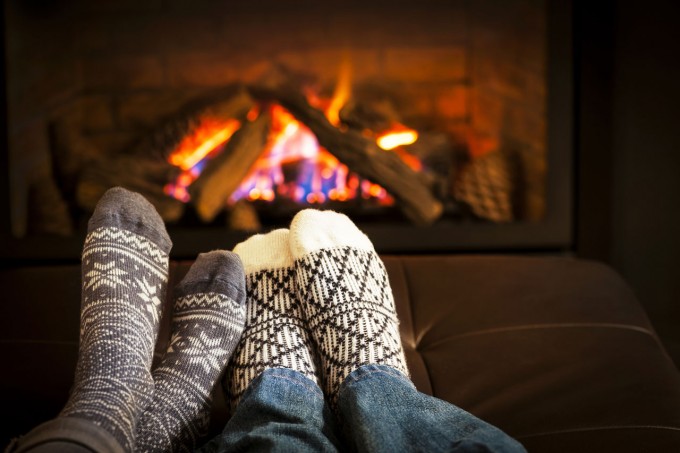
'Tis the season for holiday cheer and a cozy fire. Even
here in Texas, we’ve been having temperatures that most of us think are
low enough to light the fire. Before you pile up the logs and break out
the eggnog, HGTV and This Old House
have some tips for keeping your fireplace safe. Before you spark up the
logs, take heed that fireplaces and chimneys are involved in 42 percent
of all home-heating fires. We’ve selected some of our favorites so if
you want to see the complete HGTV list, click here.
Maintenance
The National Fire Protection Association recommends that chimneys be swept at least once a year at the beginning of the winter to remove soot and debris. Find a certified sweep in your area via the Chimney Safety Institute of America.
Fireplaces should not be used as furnaces. Use a fireplace for a short-duration fire — no longer than five hours.
Cap the Chimney. A cap fitted with wire-mesh sides covers the top of the chimney and keeps rain, birds, squirrels, and debris from entering. Replace or repair a cap that's missing or damaged.
Preparing the Fire
Before making a fire, open the glass doors, pull aside the screen curtains, and place the kindling, newspaper and logs inside. Next, open the damper and a window. The window needs to be open only a few inches. You can check to make sure the smoke will go up the chimney properly by lighting a match, quickly blowing it out and watching the smoke to see whether it's going up and out.
Keep a nonflammable rug (available at fireplace-supply stores) in front of the fireplace so that sparks won't melt or otherwise damage your carpeting.
Never use liquid fire starter.
Burn Seasoned Hardwoods. Choose dense wood, such as oak, that's been split and stored in a high and dry place for at least six months. Green wood and resinous softwoods like pine produce more creosote, a flammable by-product of combustion that can build up in the chimney.
Smaller is better. Large fires build up creosote faster.
Cleaning Up
Fireplace coals can remain hot enough to start a fire up to three days, so always wait at least that long before removing the ashes. At that point, open the damper so that the airborne ash will be drawn up the chimney instead of into the room. Be sure to wear a dust mask and open a window in the same room as the fireplace to prevent negative air pressure. Use a shovel to scoop the ashes into a metal container. Store the container far from combustible materials and surfaces, and wood floors.
Never use a vacuum to clean up ashes because live coals may be hiding in those ashes.
Clean the firebox (the area where the logs burn) at least once a week during the months you use it, when ash builds up. Leave about an inch of ash because it acts as insulation, allowing the coals to heat faster and retain the heat easier. Keep the firebox completely clean during the months when the fireplace is not in use.
Moon Insurance Agency
We are continually concerned about our customer’s safety and are pleased to provide these safety tips. If you have questions about your insurance, we welcome your questions.